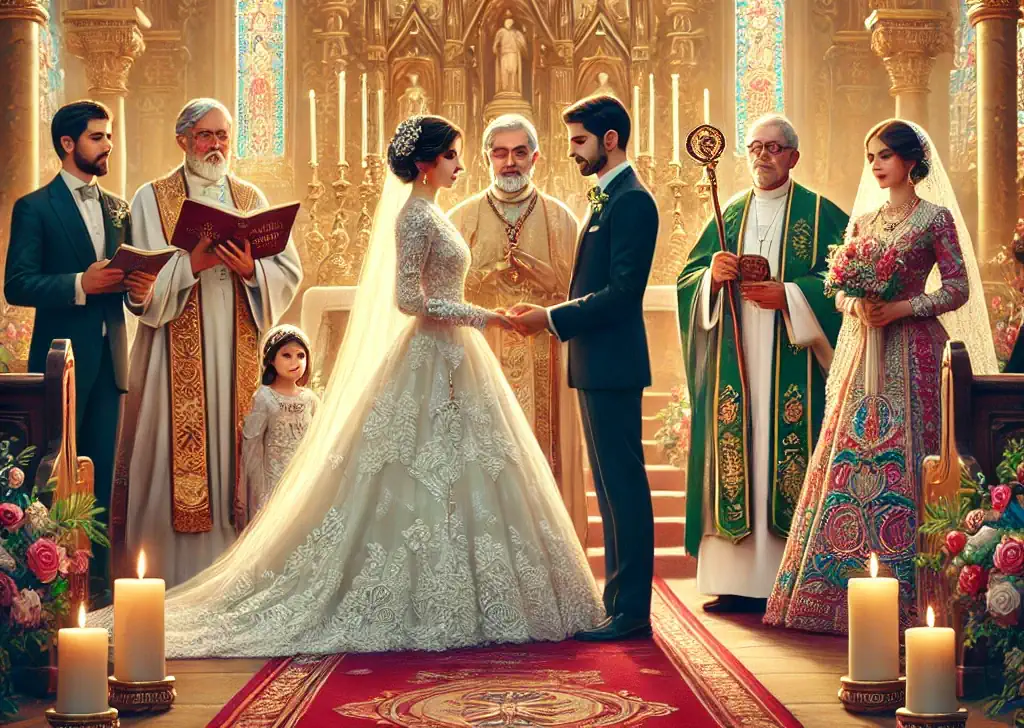In the rich tapestry of global wedding customs, each thread weaves a story of culture, tradition, and the universal celebration of love. Among these, the Korean Pyebaek ceremony stands out as a vibrant and meaningful ritual that honors family and heritage. As part of our series on Wedding Customs from Around the World, let’s dive into the heart of this beautiful tradition, exploring its origins, significance, and how it is celebrated today.
Origins and Significance
The Pyebaek (평백) is a traditional Korean wedding custom that dates back to the Goryeo Dynasty (918-1392). Originally, it was a private ceremony held a few days after the traditional Korean wedding, where the newlyweds would pay respect to the groom’s family. This ritual symbolizes the bride’s introduction into the groom’s family, a pivotal moment that underscores the importance of family in Korean culture.
At its core, the Pyebaek is a celebration of unity—not just between the bride and groom but also between their families. It’s a gesture of respect, gratitude, and acknowledgment of the newly formed familial bonds. Over time, while the essence of the ceremony has remained, its practice has evolved to reflect contemporary values and lifestyles.
The Ceremony

The Korean Pyebaek ceremony is deeply significant and meaningful as it embodies the essence of familial respect, cultural heritage, and marital commitment. This intimate ritual allows the newlyweds to pay homage to their families, symbolizing the joining of two families and the couple’s respect for their elders. The Pyebaek ceremony is rich in symbolism and conducted with great reverence. Here’s a glimpse into how the ceremony unfolds:
- Traditional Attire (Hanbok): The bride and groom wear traditional Korean attire called “hanbok.” The bride’s hanbok is often elaborately decorated with vibrant colors and intricate embroidery, symbolizing beauty and virtue, while the groom’s attire represents honor and integrity.
- Ceremonial Setting: The ceremony usually takes place at the groom’s family home or a separate venue after the wedding. The room is adorned with a low table called “pyebaek sang,” which holds symbolic offerings including dates (jujubes), chestnuts, wine, and traditional sweets.
- Sacred Rituals: The ceremony begins with the newlyweds performing a deep bow called “keunjeol” to the groom’s parents, a gesture of deep respect and gratitude. The parents then throw chestnuts and jujubes at the bride, who attempts to catch them in her skirt. This act is symbolic, with the chestnuts representing sons and the jujubes daughters, signifying the wish for many healthy children.
- Exchange of Wisdom: The groom’s parents offer words of wisdom and advice to the couple, sharing their hopes for a prosperous and harmonious marriage. This exchange is a heartfelt and emotional moment, bridging generations and imparting valuable life lessons.
- Celebratory Conclusion: Following the formal rituals, the ceremony often transitions into a more relaxed and joyous celebration, with traditional Korean food, laughter, and shared stories, marking the beginning of the bride’s integration into her new family.
Modern Adaptations
While deeply rooted in tradition, the Pyebaek ceremony has adapted to fit modern sensibilities and circumstances. Today, it’s not uncommon for the ceremony to include both the bride and groom’s families, reflecting a more inclusive approach. Many couples are finding creative ways to incorporate elements of the Pyebaek into their contemporary celebrations while maintaining its core values and significance.
Conclusion
The Korean Pyebaek ceremony is a beautiful testament to the enduring power of tradition, family, and love. It serves as a sentimental reminder of the interconnectedness of family and the enduring traditions that bind generations together. As we explore wedding customs from around the world, the Pyebaek stands as a poignant reminder of the beauty found in honoring where we come from, as we embark on new beginnings.
In embracing the Pyebaek and other cultural traditions, we’re reminded of the rich diversity and shared humanity that make our world so wonderfully complex. Here’s to love, in all its forms, and the customs that celebrate it across the globe.
Chapel of the Flowers is pleased to accommodate any cultural traditions for your special day. Begin planning your Las Vegas wedding today by exploring our customizable Las Vegas Wedding Packages.
Frequently Asked Questions About the Korean Pyebaek Ceremony
When is the Pyebaek ceremony held?
The Pyebaek ceremony traditionally takes place after the main wedding ceremony, either on the same day or within a few days following the wedding. Modern couples often choose to hold it immediately after their wedding ceremony for convenience.
Who participates in the Pyebaek ceremony?
Historically, only the groom’s family participated. However, modern celebrations often include both families, making it a more inclusive celebration. Key participants include the newlyweds, the groom’s parents, and increasingly, the bride’s parents and extended family members.
What are the symbolic foods used in the ceremony?
The ceremony includes several traditional foods with special meanings: dates (jujubes) symbolize daughters, chestnuts represent sons, wine represents the union of families, and traditional sweets symbolize sweetness in marriage.
Is the Pyebaek ceremony required for Korean weddings?
While the Pyebaek is not legally required, many Korean couples choose to include it as an important cultural tradition. It’s seen as a meaningful way to honor family and preserve cultural heritage, even in modern weddings.
Can non-Korean couples incorporate a Pyebaek ceremony?
Yes, with proper respect for the tradition, non-Korean couples can incorporate elements of the Pyebaek ceremony into their wedding. It’s important to understand the cultural significance and perform the rituals with appropriate reverence.










